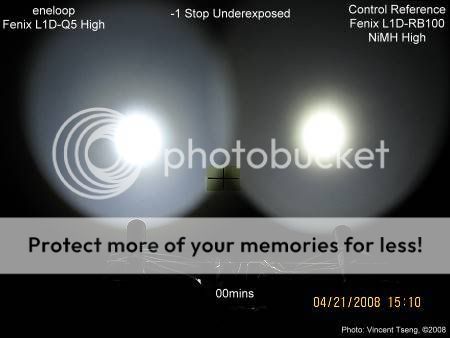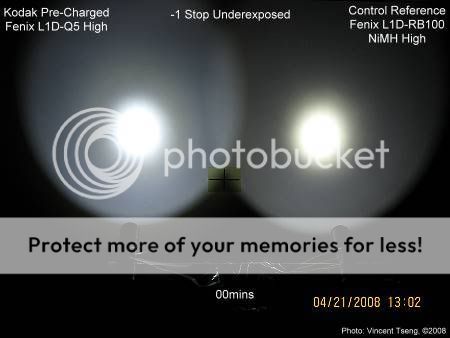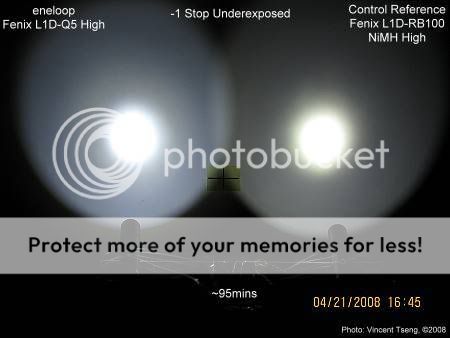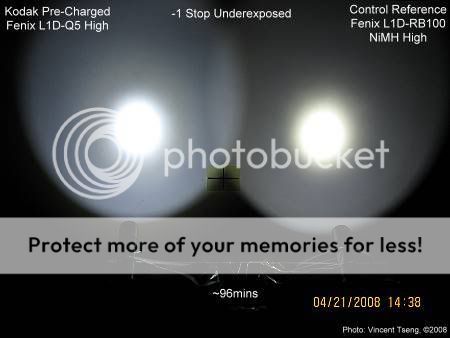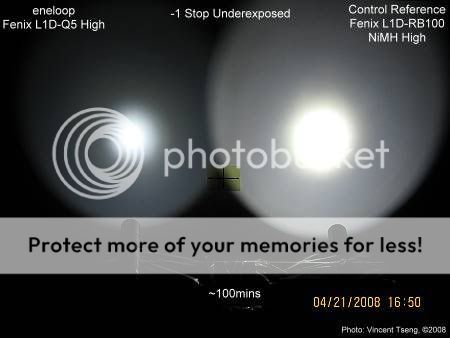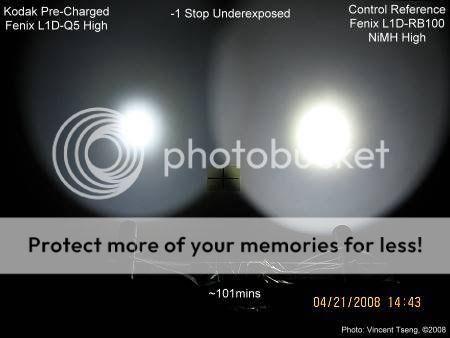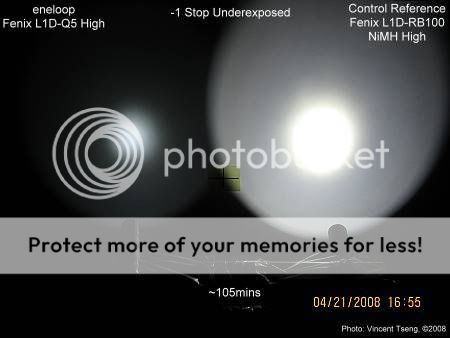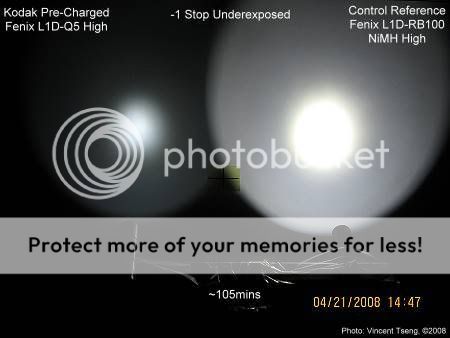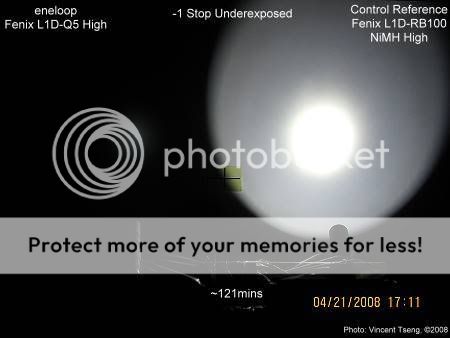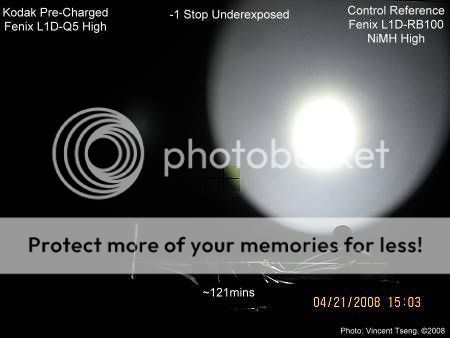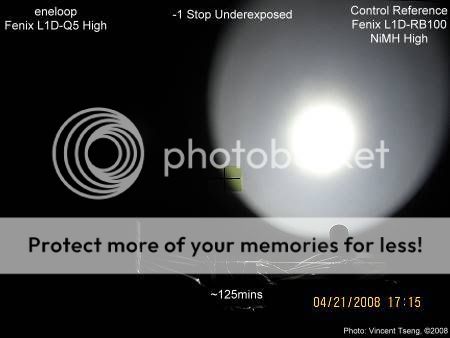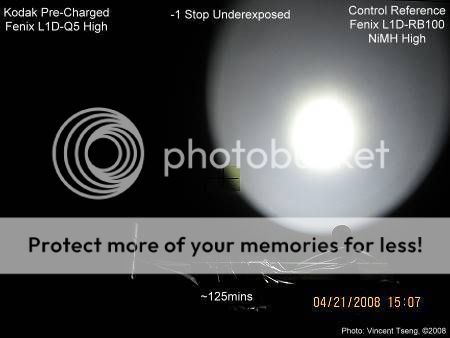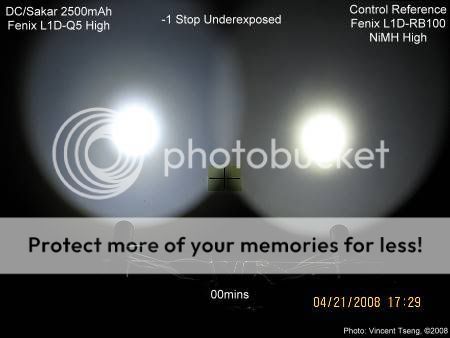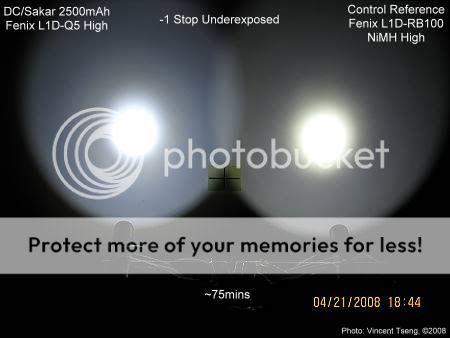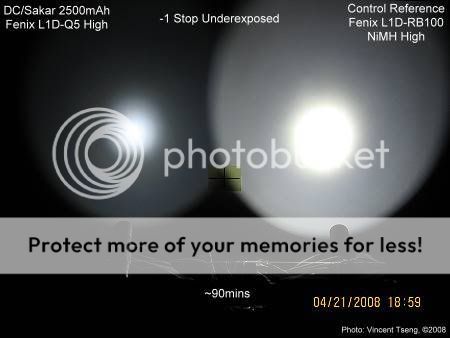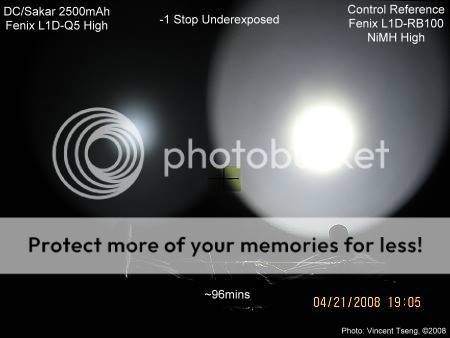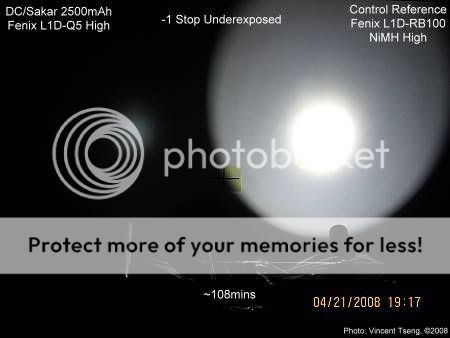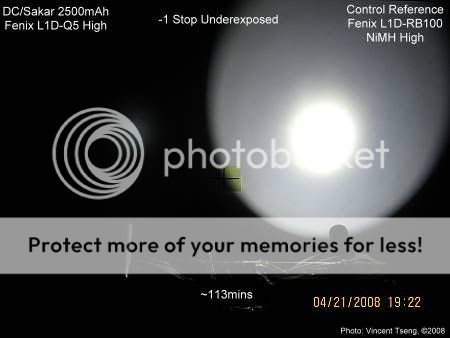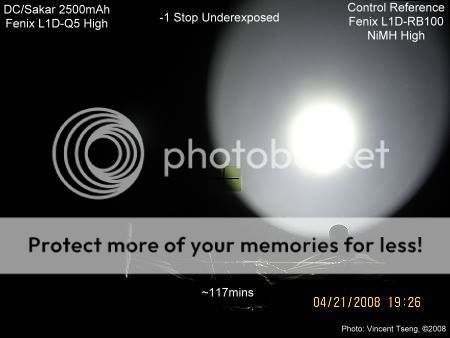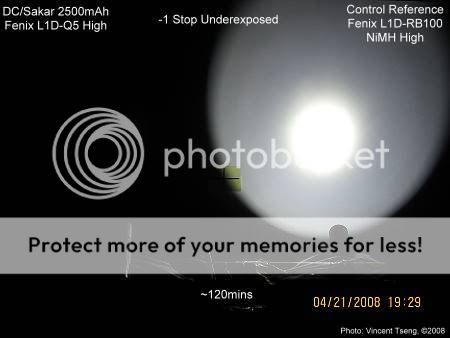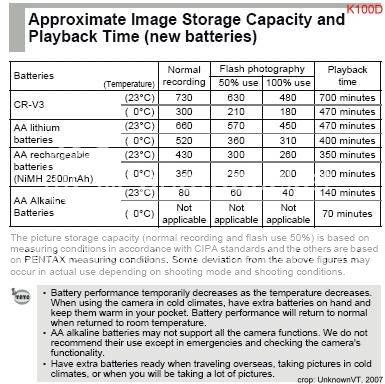Mr Happy
Flashlight Enthusiast
This is quite interesting.
It may or may not be true that the Kodak cells have more capacity, but to test it scientifically we have to measure the run time with all other things being equal.
Many devices like bulbs, and perhaps the Dorcy light, draw more current with a higher input voltage. So with Eneloops the light could run a bit brighter and use the batteries up more quickly, whereas with the Kodaks the light could run less brightly and use the batteries up more slowly.
So to make a scientifically accurate measure of energy storage one must discharge the cell under test in a fully regulated light at constant power so that each cell is being discharged at the same rate.
Now it may be that someone prefers the Kodak to run longer but slightly less brightly, in which case everything is fine. It's good that there are choices out there and that lets someone choose the cell that best fits their application.
(Note: based on chevrofreak's tests, the Kodak cells probably do store more energy than the Hybrios and likely Eneloops, but the increase in brightness with the Hybrios can also be seen.)
It may or may not be true that the Kodak cells have more capacity, but to test it scientifically we have to measure the run time with all other things being equal.
Many devices like bulbs, and perhaps the Dorcy light, draw more current with a higher input voltage. So with Eneloops the light could run a bit brighter and use the batteries up more quickly, whereas with the Kodaks the light could run less brightly and use the batteries up more slowly.
So to make a scientifically accurate measure of energy storage one must discharge the cell under test in a fully regulated light at constant power so that each cell is being discharged at the same rate.
Now it may be that someone prefers the Kodak to run longer but slightly less brightly, in which case everything is fine. It's good that there are choices out there and that lets someone choose the cell that best fits their application.
(Note: based on chevrofreak's tests, the Kodak cells probably do store more energy than the Hybrios and likely Eneloops, but the increase in brightness with the Hybrios can also be seen.)


